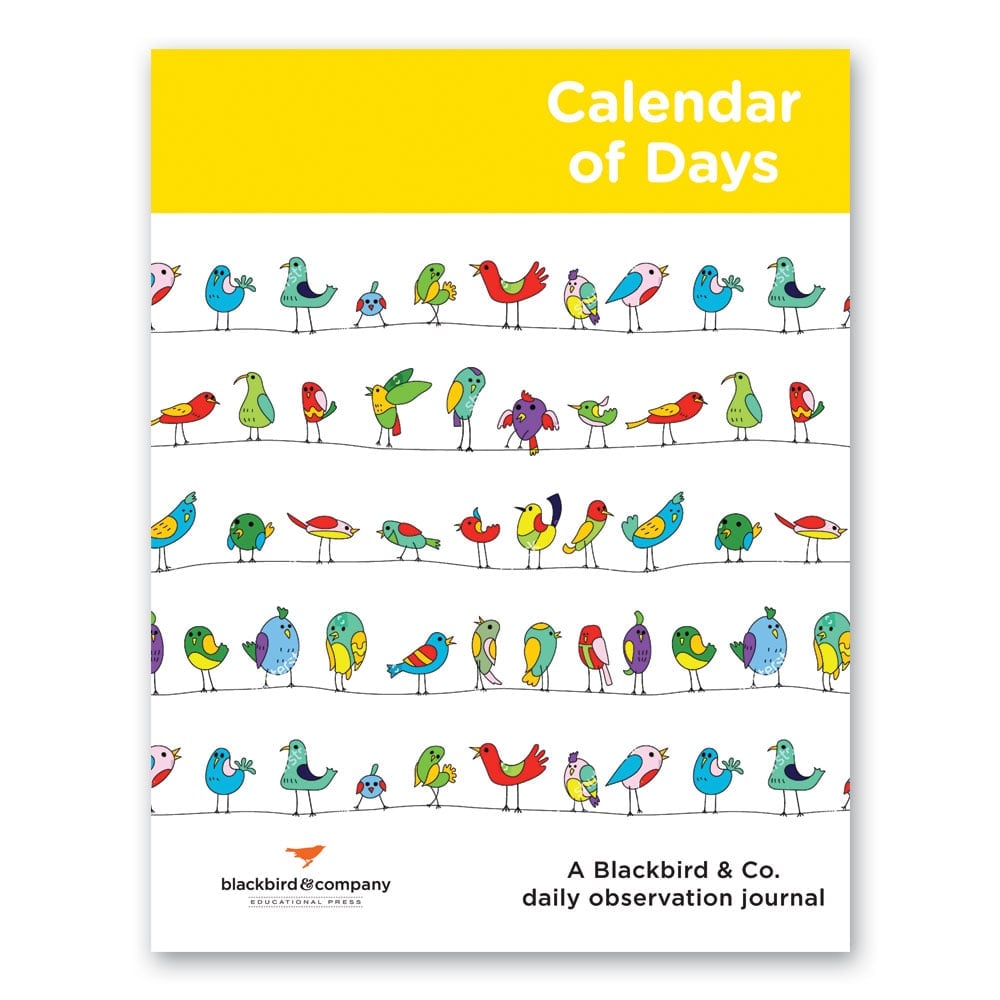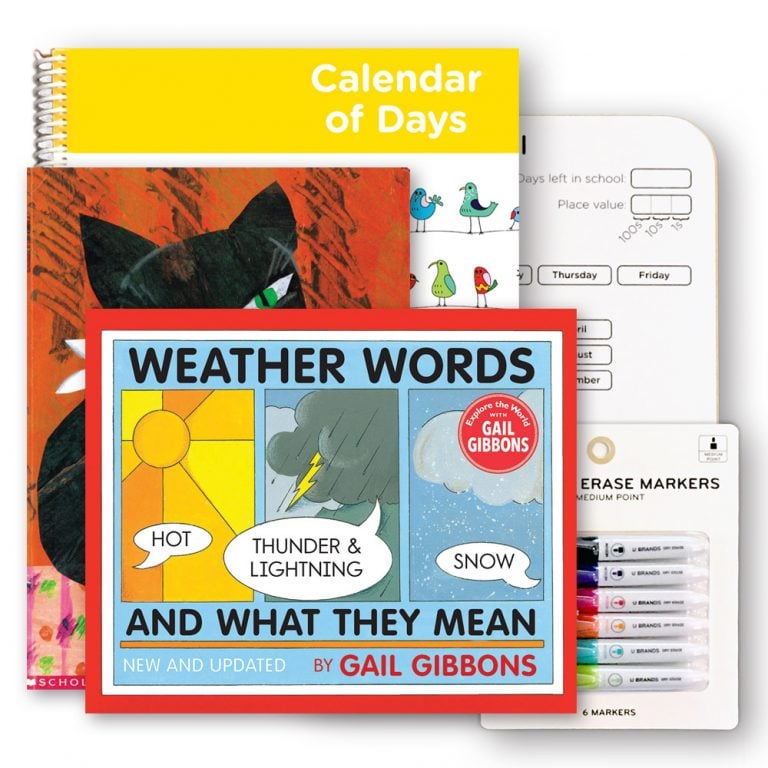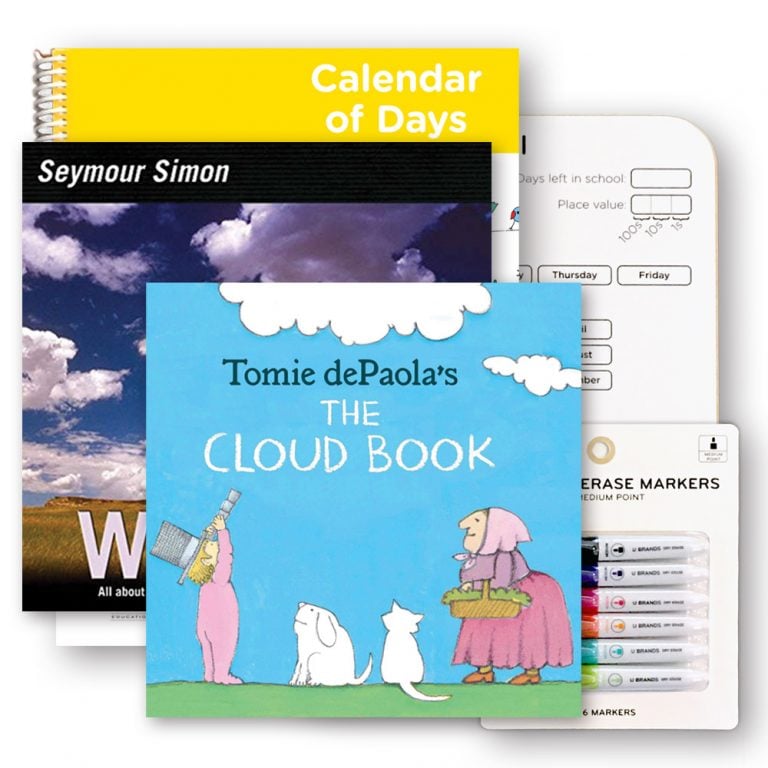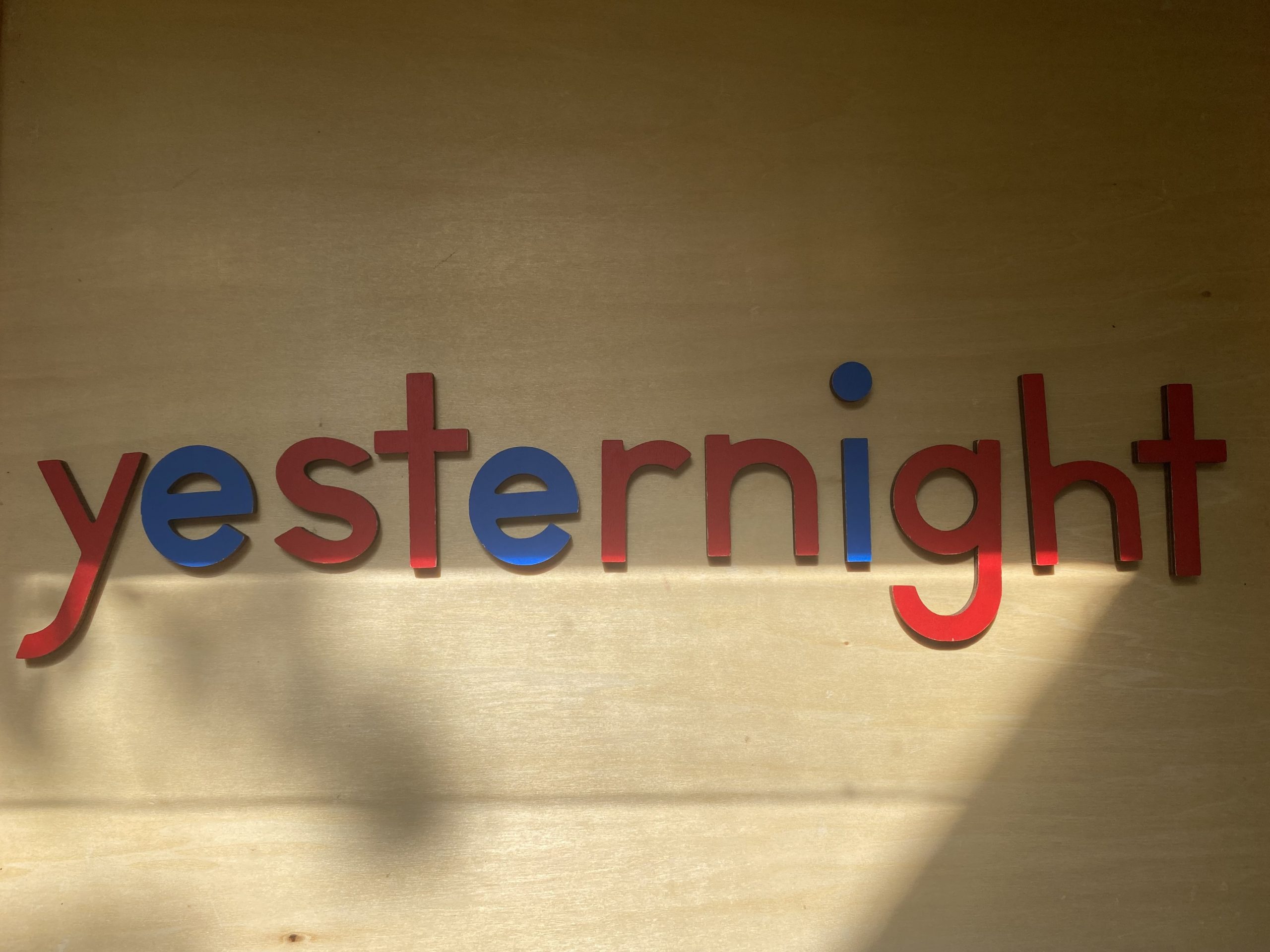
Each Calendar of Days bundle includes a teacher whiteboard, a student journal, dry erase markers + eraser, and two thematic books tied to the calendar.
Kindergarten

First Grade

Second Grade






So how is this accomplished? At first the exercises are limited to tools available to the student. This silly sentence is for review only, utilizing short vowels, sight words the, on and to, plus consonant blends sw, tr, fr, and cl is just right for a student during the middle of Kindergarten:
This silly sentence reviews short vowels, blends, digraph, utilizes sight words: the, a, and to plus utilizes new material long vowel pattern a_e. Utilize a sentence like this for students at the beginning of 1st Grade:
By the time students enter the 2nd grade, they will have been introduced to the whole gambit of phonics for reading and writing, will have learned to read and write a hefty collection of sight words, and will have practiced constructing all four types of sentences with Hatchling, Volume 1 and Hatchling, Volume 2. These students are ready to tackle passages from the books they are exploring.
Move from gentle:
To more complex:
As students get older, progressing to CORE Level 1, Level 2, Level 3 and beyond, passages from books are longer, words and phrasing becomes beautifully complex:
ONE. Create a Copy work/Dictation Notebook. Pre-bound composition books work great as a space to house this work. Date each entry and skip lines between entries. Dedicate a single page for longer entries.
TWO Type up what is to be copied or dictated.
THREE. READ! For copy work, the student reads the sentence or passage aloud slowly before beginning to copy. For dictation, first read the sentence or passage as a whole. Next begin reading phrases slowly, encouraging the student to repeat when necessary. Having your student read aloud before beginning copywork, or repeating dictation when necessary will help to be present in the activity and to press what is being learned into memory.
FOUR. Don’t hover over the student! Don’t interupt with corrections during copy work or dictation. Letting mistakes happen will help you to assess what the student has actually mastered.
FIVE. When the copy work or dictation exercise is complete, ask the student to re-read what has been written. If there are no mistakes—Bravo! If there are mistakes point them out and have the student re-copy, mistake free. Remind them that mistakes are opportunities to learn.
~Kimberly

Some of these books are categorized by grade level (GRL), some by a developmental readiness assessment (DRA), and others still are categorized by a Lexile measure. The purpose of these readers is to provide opportunities for children to read as they are mastering the patterns of phonics.
Hatchling Volume 1 for kindergarten and Hatchling Volume 2 for 1st grade, systematically introduce students to phonics for reading and writing. In the Teacher Helps that is tied to both units, we offer information and strategies including this tidbit at the top of page 9:
In the English language, there are 44 sounds that make up every single spoken word. These sound bites are called phonemes. The 26 letters of the alphabet are combined in various ways to replicate the sounds we hear. These are called graphemes. There are around 250 graphemes to write the 44 phonemes! Phenomenal, right? This is the heart of phonics.
During kindergarten and 1st grade, students using our Hatchling curriculum are introduced to over 150 of these graphemes setting them firmly on their way to reading and writing well. As students are introduced to phonics, it is important to practice both reading and writing. Early on, during kindergarten, students will have limited skills. At first, once the consonant and short vowel sounds are mastered, they will be able to read and write “can” or “fun” or “let” with ease. However, they might write “pepl” for “people” because those are the sounds they have mastered. As more complex graphemes are introduced (consonant blends, digraphs, long vowel patterns and so on), the reading and writing lexicon increases.
Amelia Bedelia brought delight to my childhood. I mean, she took every figure of speech and turned it upside down, literally! She made me laugh out loud! “Dress the chicken,” seemed an odd task to Amelia Bedelia. But she obediently got on with the task and suddenly the chicken was dressed in overalls! Once upon a time, back in my day, this series of stories was not a Just Right Reader, but rather a wonderful series of picture books. The first twelve books in the series are written by Peggy Parish. After her death, nephew Herman Parish, continued the series. Since 2009, the stories have been adapted for part of the I Can Read series published by Harper Kids.

~Kimberly


Our Grade Level Collections include everything you need to introduce and reinforce phonics for reading and writing, plus a multitude of creative opportunities for idea making to motivate students in this important work.
~Kimberly

In the August issue of National Review’s Special Issue on Education, there is an interesting article about the science of reading. In “Casualties of The Reading Wars” by Dale Chu, he asserts a profound truth in the midst of the phonics vs. whole language argument: learning to read is work.
Being the mother of 4 children (now thriving adults), I possess all sorts of memorabilia. A personal favorite is a scrappy little book where I collected words and phrases my little ones used as they were in the midst of learning to speak. The invented word yesternight is a personal favorite, “Mommy, remember the story we read yesternight?”
Children learn to speak because they are surrounded by spoken language. Children are able to create meaning from all sorts of spoken fodder, as is the case here. Using the yester of yesterday and replacing day with night to create a sophisticated descriptor with apt specificity, came to my 3-year-old with no lesson at all! Genius!
But contrary to the proponents of whole language, “easy” is not how children learn to read. This article points this out articulately: “To crack the code of how the spoken word connects to the word on the printed page, children need explicit, systematic phonics instruction.”
Every word we speak is made up of bits sound sound bites called phonemes. There are only 44 phonemes that enable us to read and write every single word you can imagine! When words are in print, these 44 sound bites are called graphemes. Systematically introducing children to these phonemes and giving them ample practice reading and writing graphemes is the road to literacy. What saddens me about this article is the fact that learning to write is not mentioned once! I read articles about literacy often—I’m kind of nerdy that way! Rarely do these articles address the interconnectedness of phonics instruction for reading and writing.
When a child reads, text is being decoded—basically translated into sounds that carry meaning. When a child writes, sounds that carry meaning, again the very same graphemes, are being encoded to the page. Reading enables the child to gather knowledge. Writing enables the child to craft and share ideas.
This said, I agree, we need to provide explicit, systematic phonics. But there is nuance involved in explicit, systematic phonics instruction. The 44 phonemes that are the building blocks of the English language need to be introduced in a wonderfully playful way. Think of it like this, every word you can imagine is made of some combination of one or two or three of the 44 pieces! Think “rooster” and “lemon” and “shelter” and “croon” and on and on and on. This should be awe inspiring. This should land you in the realm of wonder! When you are teaching your students to read and to write, the goal is to guide them on a journey to this realm, NOT the realm of rote, where memorization masks wonder!
1. Tap into the cognitive ability of your students and give them tools (metacognitive skills) to have at the ready, not material to memorize. For example: bl makes a sound that is part of the word blue, blackberry, blunder (write these for your students to read). Can we think of others together? Let’s write a list. Have students copy the list. As you introduce phonemes, provide opportunity for students to read AND write. If your student is in kindergarten or 1st grade and using our Hatchling curriculum, this approach is built in! If your child is older, and needs remediation with phonics for writing, check back this spring because we have something new in store!
2. Use a pencil. Always use a pencil. Through the 12th grade use a pencil! This technology is the best tool to establish literacy.
3. Establish the tradition of “work is GOOD”! Over the years I’ve had the privilege to encourage parents and teachers alike whose students have become weary and discouraged with the work of reading and writing. What I say to them is this: Pack an imaginary knapsack with all the books you enjoyed as a child, and use these stories to remind yourself that language is full of wonder, is actually wonderful! Pack the knapsack with hope, and happy, and hurrah! Pack it with a reminder to self that reading and writing is not an easy task accomplished via a checklist. Learning to read and to write is a GOOD pursuit. It is important work. Pack the knapsack with this phrase: Yes! Yes YOU can!
~Kimberly
We are excited to offer two sessions each for students using Hatching to kickstart the school year. Our teachers will help your students get started on the rhythm + routine of learning with Hatchling Volume 1 or Hatchling Volume 2. These 1-hour sessions will be filled with fun activities using the multi-sensory approach to primary learning. Our teachers will walk students and their parents (who are encouraged to join) through activities that can be incorporated each week to solidify happy ELA learning. Cost is $30 (curriculum is not included).



If you a parent or a teacher using Hatchling Volume 1 (Kindergarten) or Hatchling Volume 2 (1st Grade), have we got a Zoom for YOU!
Join us for an informational session where we will be sharing strategies, inspiration, and downloadable FREEBIES! There will be time for you to ask questions of our Pages teachers and time to cheer each other on. May this informational (FREE!) session help you feel empowered to step into 2022/23 with pep in your step.
We are so pleased to announce the arrival of our Hatchling Discovery Guides! This integrated, multi-sensory approach encourages Kindergarten through 2nd Grade learners to discover the complex connections between reading and writing the fun way.

Our Hatchling unit is designed to be paced over the course of two years as a comprehensive language arts program that introduces all the skills necessary to read fluently and write fluidly. Over the course of 52 weeks (2 school years), your little ones will discover the joys of reading and writing, delighting in the process.
Each year the phonics of reading and writing is introduced in a logical progression from initial sounds to more complex patterns in three concise student journals. Our teacher guide is designed to help you mentor and inspire your students through their individual important work. There are no lessons to prepare, but rather time to come alongside.
Each week students will:

For second year students in 1st or 2nd grade, we’ve added an element that teaches the four types of sentences and offers an opportunity to practice the art of sentence crafting using the miniature objects. Mazes, too, are a fun addition at this level, further developing fine motor skills and logic.
And, in line with all our offerings, we’ve tied writing to great stories. What better to spark the child’s imagination than an endearing tale?
All this, plus “just right” readers along the way, enables your students to practice phonics as it is being introduced.
We believe the best kind of learning is happy learning . Hatchlings will open the door to the wonder and potential of language, inspiring curiosity and independence along the way. Both Volume 1 and Volume 2 will be available for pre-order at blackbirdandcompany.com April 1st. Hatchlings will begin shipping early June to those who place early orders. Stay tuned for more details.